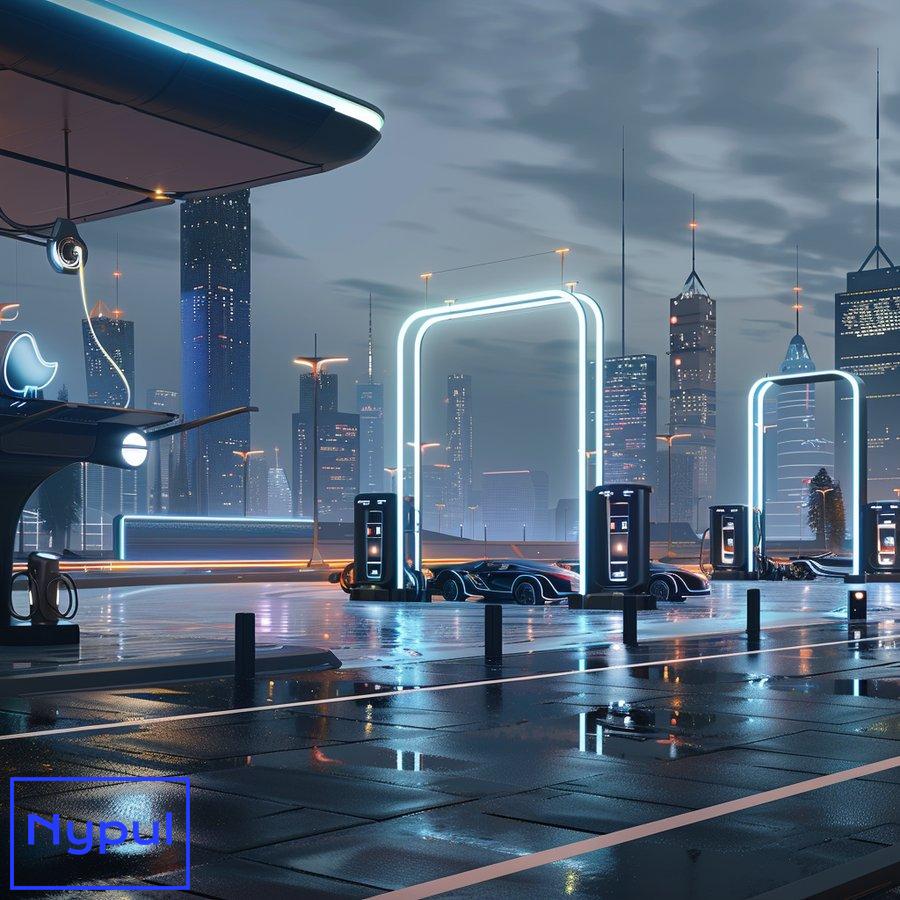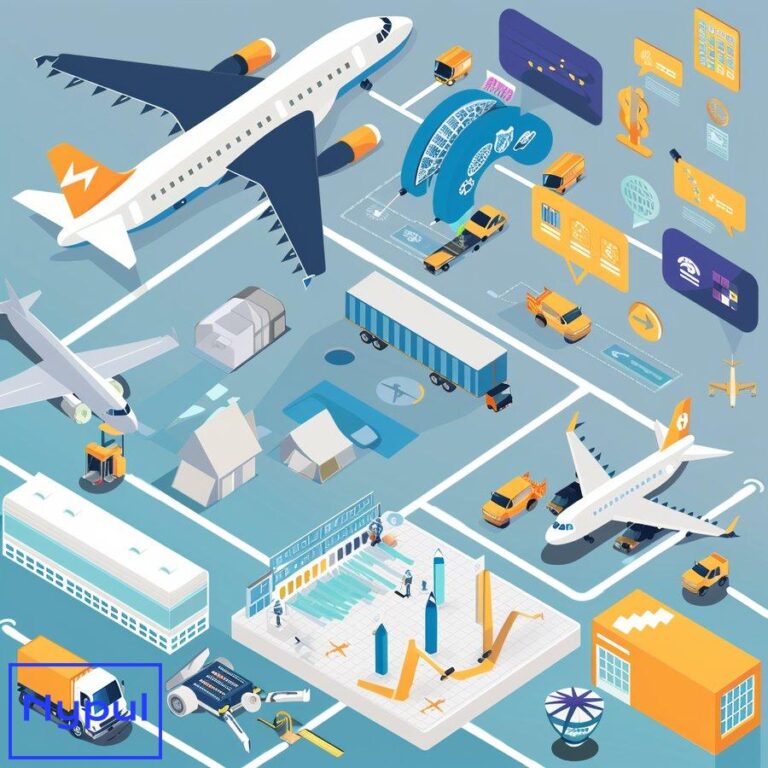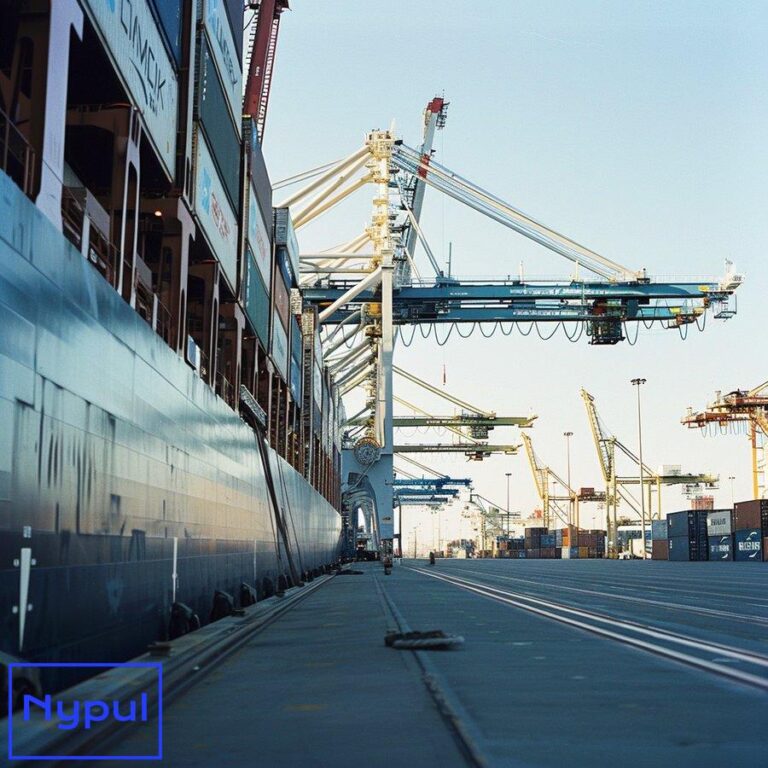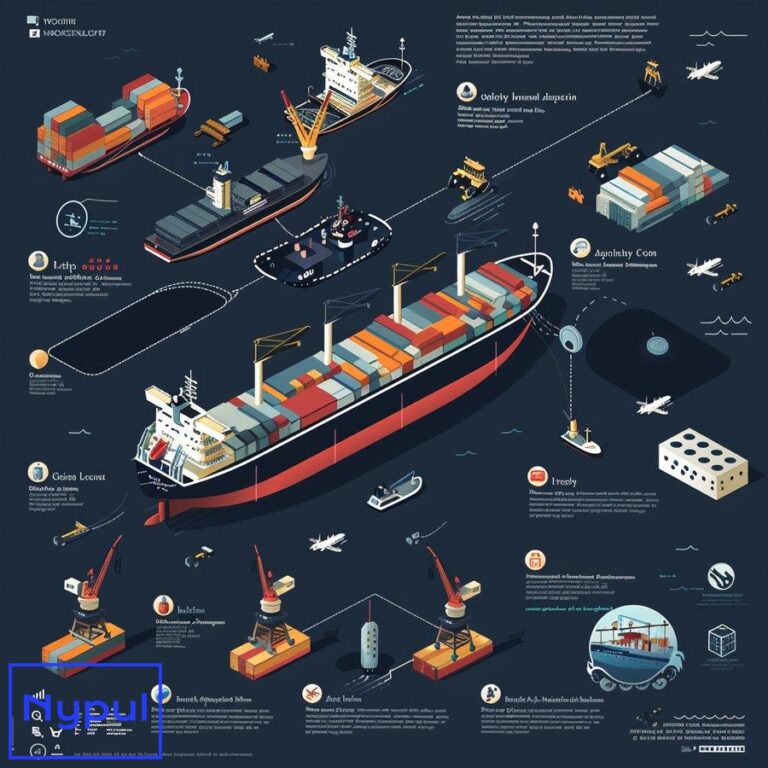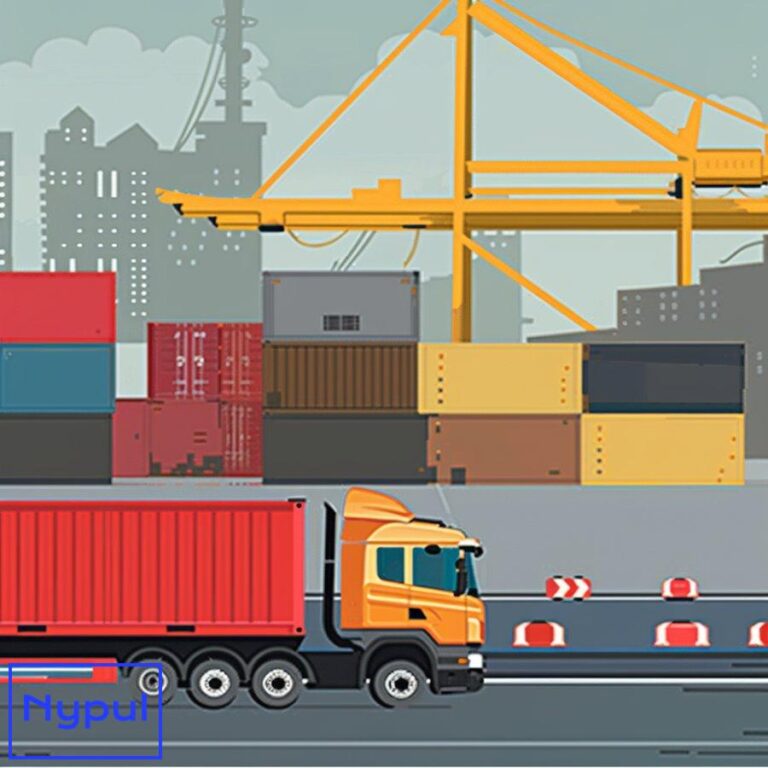What Is the Advanced Clean Truck Rule for 2024
What is the Advanced Clean Truck (ACT) Rule?
The Advanced Clean Truck (ACT) Rule represents a groundbreaking initiative in the realm of commercial vehicle emissions reduction. Enacted by the California Air Resources Board (CARB), this regulation aims to accelerate the transition to zero-emission trucks and vans in the state of California. The ACT Rule mandates manufacturers to sell an increasing percentage of zero-emission vehicles (ZEVs) in California, starting from 2024.
At its core, the ACT Rule is designed to address the significant contribution of medium- and heavy-duty vehicles to air pollution and greenhouse gas emissions. These vehicles, while comprising only a small fraction of the total vehicles on the road, are responsible for a disproportionate amount of harmful emissions. The rule seeks to mitigate this impact by promoting the adoption of cleaner technologies in the commercial vehicle sector.

The ACT Rule operates on a credit system, where manufacturers earn credits for selling zero-emission vehicles and can use these credits to meet their sales targets. This system provides flexibility for manufacturers while ensuring progress towards the overall goal of increased ZEV adoption.
Key components of the ACT Rule include:
Sales Targets: Manufacturers must sell an increasing percentage of zero-emission trucks and vans each year, starting from 2024.
Vehicle Categories: The rule covers a wide range of vehicle classes, from light-duty delivery vans to heavy-duty long-haul trucks.
Reporting Requirements: Manufacturers and large fleet operators must report specific information about their vehicle operations to CARB.
Compliance Mechanisms: The rule includes provisions for credit trading and banking, allowing manufacturers to meet their obligations more flexibly.
The ACT Rule is part of a broader strategy to reduce emissions from the transportation sector, which is the largest source of greenhouse gas emissions in California. By targeting commercial vehicles, the rule addresses a significant contributor to air pollution, particularly in urban areas and along major transportation corridors.
The implementation of the ACT Rule is expected to have far-reaching effects on the trucking industry, vehicle manufacturers, and businesses that rely on commercial vehicles. It necessitates significant changes in vehicle technology, manufacturing processes, and fleet management practices.
While the ACT Rule originated in California, its impact extends beyond the state’s borders. Several other states have adopted or are considering similar regulations, creating a ripple effect across the nation’s transportation sector. This broader adoption underscores the rule’s potential to drive substantial changes in the commercial vehicle market and accelerate the transition to cleaner transportation technologies.
As we delve deeper into the specifics of the ACT Rule and its implications for various stakeholders, it’s crucial to understand that this regulation represents a pivotal shift in how we approach emissions reduction in the commercial vehicle sector. The ACT Rule sets a new standard for environmental responsibility in transportation, challenging industry players to innovate and adapt to a cleaner, more sustainable future.
Who does the ACT Rule affect in 2024?
![]()
The Advanced Clean Truck (ACT) Rule casts a wide net, affecting various stakeholders within the commercial vehicle ecosystem. As the rule takes effect in 2024, its impact will be felt across multiple sectors of the transportation industry. Understanding who is affected and how is crucial for businesses and individuals to prepare and adapt to the new regulatory landscape.
Vehicle Manufacturers
At the forefront of the ACT Rule’s impact are vehicle manufacturers. These entities bear the primary responsibility for meeting the zero-emission vehicle (ZEV) sales targets set by the regulation. The rule affects manufacturers of medium- and heavy-duty vehicles, including:
- Class 2b-3 vehicles (8,501-14,000 lbs GVWR)
- Class 4-8 vocational vehicles
- Class 7-8 tractors
Manufacturers must ensure that a specified percentage of their annual California sales are zero-emission vehicles, starting in 2024. This requirement necessitates significant changes in product development, manufacturing processes, and sales strategies.
Fleet Operators
While the direct compliance requirements primarily target manufacturers, fleet operators are indirectly but significantly affected by the ACT Rule. Large fleet operators, defined as those with 50 or more vehicles or $50 million or more in annual revenue, must report specific information about their vehicle operations to CARB. This reporting requirement applies to:
- Businesses, government agencies, and other organizations operating vehicles in California
- Entities that dispatch vehicles into or throughout California
- Brokers that arrange for vehicle movement in California
The information collected through these reports will inform future regulations and help CARB understand the state of fleet operations in California.
Drayage Operators
Drayage operators, who specialize in short-distance transport of goods, particularly around ports and rail yards, face unique challenges under the ACT Rule. The rule’s emphasis on zero-emission vehicles in urban areas directly impacts drayage operations, which often involve frequent short trips in densely populated areas.
Businesses Relying on Commercial Vehicles
Companies that rely on commercial vehicles for their operations, even if they don’t own or operate large fleets themselves, will feel the effects of the ACT Rule. These businesses may include:
- Retailers with delivery services
- Construction companies
- Waste management firms
- Utility companies
- Food and beverage distributors
As the availability of zero-emission vehicles increases and traditional diesel vehicles become less common, these businesses will need to adapt their vehicle procurement and operational strategies.
Vehicle Dealers and Leasing Companies
Dealerships and leasing companies specializing in medium- and heavy-duty vehicles will need to adjust their inventory and offerings to align with the new market demands created by the ACT Rule. They will play a crucial role in educating customers about zero-emission options and facilitating the transition to cleaner vehicles.
Infrastructure Providers
The shift towards zero-emission vehicles necessitates significant changes in fueling and charging infrastructure. Companies involved in developing, installing, and maintaining electric vehicle charging stations and hydrogen fueling stations will see increased demand for their services.
Local and State Governments
Government entities at both the local and state levels are affected by the ACT Rule in multiple ways:
- As fleet operators themselves, many government agencies will need to transition their vehicles to zero-emission options.
- They will play a role in developing and implementing supporting policies and infrastructure to facilitate the transition to zero-emission vehicles.
- Local governments may need to adapt zoning laws and building codes to accommodate new charging and fueling infrastructure.
Environmental and Community Organizations
While not directly regulated by the ACT Rule, environmental and community organizations have a vested interest in its implementation. These groups will likely monitor the rule’s progress and its impact on air quality and public health, particularly in communities disproportionately affected by vehicle emissions.
Technology and Component Suppliers
Companies that supply technologies and components for zero-emission vehicles, such as battery manufacturers, electric drivetrain developers, and software providers, will see increased demand for their products and services as vehicle manufacturers ramp up production of ZEVs.
The ACT Rule’s impact in 2024 extends far beyond just vehicle manufacturers. It sets in motion a series of changes that ripple through the entire commercial vehicle ecosystem. From fleet operators to infrastructure providers, from local governments to technology suppliers, a wide range of entities must prepare for and adapt to the new regulatory landscape. This broad impact underscores the transformative nature of the ACT Rule and its potential to reshape the commercial vehicle sector in California and beyond.
What are the specific requirements for manufacturers in 2024?
The Advanced Clean Truck (ACT) Rule imposes specific and stringent requirements on vehicle manufacturers starting in 2024. These requirements are designed to accelerate the adoption of zero-emission vehicles (ZEVs) in the medium- and heavy-duty vehicle sector. Understanding these requirements is crucial for manufacturers to ensure compliance and for other stakeholders to anticipate changes in the commercial vehicle market.
ZEV Sales Percentage Requirements
The cornerstone of the ACT Rule is the mandate for manufacturers to sell an increasing percentage of zero-emission vehicles as part of their annual sales in California. The requirements vary based on the vehicle class:
| Vehicle Class | 2024 ZEV Sales Requirement |
|---|---|
| Class 2b-3 | 5% |
| Class 4-8 Vocational | 9% |
| Class 7-8 Tractors | 5% |
These percentages represent the minimum proportion of a manufacturer’s California sales that must be zero-emission vehicles in 2024. The percentages increase annually, reaching up to 55% for some vehicle classes by 2035.
Credit System
The ACT Rule implements a credit system to provide flexibility for manufacturers in meeting their ZEV sales requirements:
Credit Generation: Manufacturers earn credits for each ZEV sold in California. The number of credits earned per vehicle depends on factors such as the vehicle’s weight class and range.
Credit Usage: Credits can be used to meet the sales percentage requirements. Manufacturers can bank excess credits for future use or trade them with other manufacturers.
Near-Zero Emission Vehicles (NZEVs): Manufacturers can earn partial credits for near-zero emission vehicles, such as plug-in hybrids, although these credits are capped at a certain percentage of the total requirement.
Reporting Requirements
Manufacturers must submit annual reports to CARB detailing their compliance with the ACT Rule. These reports must include:
- Total number of vehicles sold in California by weight class
- Number of ZEVs and NZEVs sold in California
- Credit balances and transactions
- Vehicle specifications, including range and powertrain details
Vehicle Categories and Definitions
The ACT Rule provides specific definitions for vehicle categories to ensure clarity in compliance:
Zero-Emission Vehicle (ZEV): A vehicle with a drivetrain that produces zero exhaust emissions of any criteria pollutant under any possible operational modes or conditions.
Near-Zero Emission Vehicle (NZEV): A vehicle that can operate in zero-emission mode for a certain range but also has a conventional engine for extended operations.
Exemptions and Phase-In Periods
The ACT Rule includes provisions for certain exemptions and phase-in periods:
Small Volume Manufacturers: Manufacturers with limited sales volumes in California may be exempt from some requirements or subject to modified timelines.
Specialty Vehicles: Certain specialty vehicles, such as emergency vehicles or military vehicles, may be exempt from the ZEV sales requirements.
Technology Demonstration: The rule allows for a limited number of vehicles to be classified as “technology demonstration” vehicles, which can earn credits without counting towards the sales requirement.
Compliance Flexibility Mechanisms
To help manufacturers adapt to the new requirements, the ACT Rule includes several flexibility mechanisms:
Credit Trading: Manufacturers can buy, sell, or trade credits with other manufacturers to meet their obligations.
Credit Banking: Excess credits can be banked for use in future years, providing a buffer against potential shortfalls.
Deficit Makeup: If a manufacturer falls short of its requirement in a given year, it has a limited time to make up the deficit using credits from subsequent years.
Performance and Durability Standards
While the primary focus is on sales percentages, the ACT Rule also sets standards for ZEV performance and durability:
Minimum Range Requirements: ZEVs must meet specific range requirements based on their weight class to qualify for full credits.
Warranty Provisions: Manufacturers must provide warranties for ZEV components, including batteries, to ensure long-term reliability.
Environmental Performance: ZEVs must demonstrate zero emissions under all operating conditions to qualify under the rule.
The specific requirements for manufacturers in 2024 under the ACT Rule are comprehensive and multifaceted. They encompass not only sales targets but also reporting obligations, credit systems, and vehicle performance standards. These requirements are designed to push the commercial vehicle market towards zero-emission technologies while providing manufacturers with some flexibility in how they achieve compliance.
For manufacturers, meeting these requirements will require significant investments in research and development, production capacity, and marketing strategies. It will also necessitate close collaboration with suppliers, dealers, and fleet customers to ensure that the zero-emission vehicles produced meet market needs and can be effectively deployed in real-world operations.
As the first year of implementation, 2024 marks a critical juncture in the transition to zero-emission commercial vehicles. The success of manufacturers in meeting these initial requirements will set the tone for the rule’s long-term impact and the broader shift towards cleaner transportation technologies.
How does the ACT Rule impact drayage operations?

The Advanced Clean Truck (ACT) Rule has significant implications for drayage operations, which play a crucial role in the movement of goods, particularly around ports and rail yards. Drayage, involving the short-distance transport of containers and bulk cargo, is a key component of the logistics chain and is particularly sensitive to regulatory changes affecting commercial vehicles.
Transition to Zero-Emission Vehicles
The ACT Rule’s primary impact on drayage operations stems from its push towards zero-emission vehicles (ZEVs):
Fleet Composition Changes: Drayage operators will need to gradually incorporate ZEVs into their fleets. This transition may begin with shorter-range operations and expand as technology improves.
Vehicle Availability: As manufacturers increase production of zero-emission trucks to meet ACT Rule requirements, drayage operators will have more options for ZEVs suitable for their operations.
Operational Adjustments
The shift to ZEVs necessitates several operational adjustments for drayage companies:
Range Management: Electric drayage trucks typically have shorter ranges than their diesel counterparts. Operators must carefully plan routes and charging schedules to ensure efficient operations.
Charging Infrastructure: Drayage companies need to invest in charging infrastructure at their facilities or secure access to public charging stations. This may require coordination with port authorities and other stakeholders.
Maintenance and Training: ZEVs require different maintenance procedures and skills compared to traditional diesel trucks. Drayage operators must invest in training for drivers and maintenance staff.
Financial Considerations
The ACT Rule introduces new financial dynamics for drayage operations:
Initial Investment: ZEVs typically have higher upfront costs than conventional trucks, impacting capital expenditure planning for drayage companies.
Operational Costs: While ZEVs have higher initial costs, they often have lower operational costs due to reduced fuel and maintenance expenses. Drayage operators must consider these long-term savings in their financial planning.
Incentives and Grants: Various incentive programs and grants are available to support the transition to ZEVs, which can help offset the higher initial costs for drayage operators.
Environmental Impact
The ACT Rule’s impact on drayage operations extends to environmental considerations:
Emissions Reduction: By transitioning to ZEVs, drayage operations can significantly reduce their environmental footprint, particularly in terms of local air pollutants and greenhouse gas emissions.
Community Relations: Reduced emissions and noise from ZEVs can improve relations with local communities, particularly in areas near ports and rail yards that have historically been impacted by air pollution from drayage operations.
Compliance and Reporting
The ACT Rule introduces new compliance and reporting requirements that affect drayage operations:
Fleet Reporting: Large fleet operators, including many drayage companies, must report detailed information about their vehicle operations to CARB.
Compliance Planning: Drayage operators need to develop long-term compliance strategies to meet the increasing ZEV requirements over time.
Market Competitiveness
The ACT Rule’s impact on drayage operations also has implications for market competitiveness:
Early Adopter Advantage: Drayage companies that transition to ZEVs early may gain a competitive advantage, particularly as shippers increasingly prioritize low-emission transportation options.
Service Differentiation: The ability to offer zero-emission drayage services can become a unique selling point, especially for environmentally conscious clients.
Operational Efficiency
The transition to ZEVs under the ACT Rule can lead to changes in operational efficiency for drayage companies:
Route Optimization: The need to manage vehicle range and charging times may lead to more sophisticated route planning and optimization strategies.
Data-Driven Operations: The use of ZEVs often comes with advanced telematics and data collection capabilities, allowing for more data-driven decision-making in drayage operations.
Infrastructure Coordination
The ACT Rule’s impact on drayage operations extends to infrastructure coordination:
Port and Rail Yard Collaboration: Drayage operators need to work closely with port authorities and rail yard operators to ensure adequate charging infrastructure and supportive policies for ZEV operations.
Grid Capacity: The increased electricity demand from ZEVs may require coordination with local utilities to ensure sufficient grid capacity, particularly in areas with high concentrations of drayage activity.
Technology Adoption
The ACT Rule accelerates technology adoption in drayage operations:
Advanced Vehicle Technologies: Beyond just zero-emission powertrains, the transition may involve adopting advanced technologies such as autonomous driving features and predictive maintenance systems.
Digital Integration: The shift to ZEVs often comes with increased digital integration, allowing for better tracking, scheduling, and coordination of drayage operations.
The impact of the ACT Rule on drayage operations is multifaceted and transformative. It requires drayage companies to rethink their operational strategies, invest in new technologies, and adapt to a changing regulatory landscape. While the transition presents challenges, it also offers opportunities for innovation, efficiency improvements, and environmental leadership in the crucial last-mile segment of the logistics chain.
Drayage operators that successfully navigate this transition can position themselves as leaders in sustainable logistics, potentially gaining competitive advantages in a market increasingly focused on environmental performance. However, the transition will require careful planning, significant investment, and closecollaboration with various stakeholders, including vehicle manufacturers, infrastructure providers, and regulatory bodies.
The success of drayage operators in adapting to the ACT Rule will play a crucial role in demonstrating the feasibility of zero-emission technologies in the challenging environment of port and rail yard operations. This, in turn, can accelerate the broader adoption of clean technologies across the entire trucking industry.
What compliance strategies can fleet operators adopt?
Fleet operators face significant challenges in complying with the Advanced Clean Truck (ACT) Rule. Developing effective compliance strategies is crucial for maintaining operational efficiency while meeting regulatory requirements. Here are key strategies fleet operators can adopt:
Phased ZEV Integration
A gradual approach to integrating zero-emission vehicles (ZEVs) into existing fleets can help manage the transition:
Pilot Programs: Start with small-scale pilot programs to test ZEVs in real-world operations. This allows operators to gain experience and identify potential issues before full-scale implementation.
Route Optimization: Begin ZEV deployment on routes best suited to their current capabilities, such as shorter, predictable routes with access to charging infrastructure.
Mixed Fleet Management: Maintain a mix of ZEVs and conventional vehicles during the transition period to ensure operational flexibility.
Infrastructure Development
Investing in charging infrastructure is critical for successful ZEV integration:
On-Site Charging: Install charging stations at fleet depots to support overnight charging and opportunity charging during vehicle downtime.
Public Charging Partnerships: Establish partnerships with public charging networks to ensure access to charging facilities along common routes.
Smart Charging Systems: Implement smart charging systems to optimize charging schedules and reduce electricity costs.
Vehicle Selection and Procurement
Careful selection of ZEVs is essential for meeting operational needs:
Needs Assessment: Conduct a thorough analysis of operational requirements to select ZEVs that best match specific use cases.
Total Cost of Ownership (TCO) Analysis: Consider the long-term costs and benefits of ZEVs, including lower fuel and maintenance costs, when making procurement decisions.
Diverse Supplier Relationships: Develop relationships with multiple ZEV manufacturers to ensure a steady supply of vehicles and mitigate risks associated with relying on a single supplier.
Operational Adjustments
Adapting operations to accommodate ZEV characteristics is crucial:
Route Planning: Implement advanced route planning systems that account for ZEV range limitations and charging requirements.
Load Management: Optimize load distribution to maximize the efficiency of ZEVs, considering factors like weight and aerodynamics.
Maintenance Protocols: Develop new maintenance protocols specific to ZEVs, including battery health monitoring and electric drivetrain maintenance.
Training and Education
Investing in workforce development is essential for successful ZEV integration:
Driver Training: Provide comprehensive training for drivers on ZEV operation, including efficient driving techniques and proper charging procedures.
Maintenance Staff Education: Train maintenance personnel on ZEV-specific systems and safety protocols.
Management Education: Ensure management teams understand the implications of ZEV adoption on operations, finances, and compliance.
Financial Planning
Developing a robust financial strategy is crucial for managing the transition to ZEVs:
Capital Planning: Develop long-term capital plans that account for the higher upfront costs of ZEVs and associated infrastructure.
Incentive Utilization: Actively pursue available incentives, grants, and tax credits to offset the costs of ZEV adoption.
Financing Options: Explore innovative financing options, such as battery leasing or pay-per-mile models, to manage costs.
Compliance Monitoring and Reporting
Establishing systems for tracking compliance and fulfilling reporting requirements is essential:
Data Management Systems: Implement robust data management systems to track vehicle usage, emissions, and compliance metrics.
Regular Audits: Conduct regular internal audits to ensure ongoing compliance and identify areas for improvement.
Reporting Protocols: Develop clear protocols for collecting and reporting required information to regulatory bodies.
Collaboration and Partnerships
Engaging with various stakeholders can support compliance efforts:
Industry Associations: Participate in industry associations to stay informed about best practices and regulatory developments.
Supplier Partnerships: Develop strong partnerships with ZEV manufacturers and infrastructure providers to ensure access to necessary resources.
Regulatory Engagement: Engage with regulatory bodies to provide feedback on implementation challenges and opportunities for improvement.
Technology Integration
Leveraging advanced technologies can enhance compliance efforts:
Telematics: Implement advanced telematics systems to monitor vehicle performance, track emissions, and optimize operations.
Predictive Analytics: Use predictive analytics to forecast maintenance needs and optimize vehicle utilization.
Charging Management Software: Employ smart charging management software to optimize charging schedules and reduce energy costs.
Alternative Compliance Mechanisms
Exploring alternative compliance options can provide additional flexibility:
Credit Trading: Participate in credit trading markets to buy or sell ZEV credits, providing flexibility in meeting compliance targets.
Near-Zero Emission Vehicles (NZEVs): Consider incorporating NZEVs, such as plug-in hybrids, as a transitional strategy, recognizing their limited credit potential under the ACT Rule.
Innovative Operational Models
Exploring new operational models can support compliance efforts:
Shared Fleet Models: Consider participating in shared fleet models or collaborations with other operators to maximize ZEV utilization.
Last-Mile Partnerships: Develop partnerships with last-mile delivery services that use smaller ZEVs to optimize overall fleet emissions.
By adopting a comprehensive approach that combines these strategies, fleet operators can develop effective compliance plans for the ACT Rule. The key is to view compliance not just as a regulatory requirement but as an opportunity to innovate, improve efficiency, and position the fleet for long-term success in a rapidly evolving transportation landscape.
Successful compliance strategies will likely involve a combination of technological adoption, operational innovation, and strategic planning. Fleet operators that embrace this transition proactively can not only meet regulatory requirements but also gain competitive advantages in terms of operational efficiency, cost management, and environmental performance.
How does the ACT Rule relate to other clean vehicle regulations?
The Advanced Clean Truck (ACT) Rule is part of a broader ecosystem of clean vehicle regulations aimed at reducing emissions from the transportation sector. Understanding how the ACT Rule relates to other regulations is crucial for stakeholders to navigate the complex regulatory landscape and develop comprehensive compliance strategies.
California’s Comprehensive Approach
The ACT Rule is a key component of California’s multifaceted approach to reducing vehicle emissions:
Low Carbon Fuel Standard (LCFS): The LCFS complements the ACT Rule by incentivizing the use of low-carbon fuels, including electricity and hydrogen for ZEVs. Fleet operators adopting ZEVs under the ACT Rule can benefit from LCFS credits.
Cap-and-Trade Program: This program sets a limit on overall greenhouse gas emissions in California. The transition to ZEVs under the ACT Rule can help businesses reduce their emissions and potentially lower their compliance costs under the Cap-and-Trade program.
Advanced Clean Cars Program: While focused on light-duty vehicles, this program shares the ACT Rule’s goal of accelerating ZEV adoption. Together, these regulations create a comprehensive approach to vehicle electrification across different weight classes.
Federal Regulations
The ACT Rule interacts with several federal regulations and initiatives:
EPA Emissions Standards: The ACT Rule goes beyond federal emissions standards set by the Environmental Protection Agency (EPA). However, ZEVs deployed under the ACT Rule inherently comply with federal emissions standards.
National Highway Traffic Safety Administration (NHTSA) Fuel Efficiency Standards: While the ACT Rule focuses on ZEV adoption rather than fuel efficiency, the shift to ZEVs aligns with NHTSA’s goals of reducing fuel consumption in the transportation sector.
Renewable Fuel Standard (RFS): The RFS program, which promotes the use of renewable fuels, indirectly complements the ACT Rule by supporting the development of alternative fuel infrastructure that can benefit ZEV adoption.
Other State Regulations
The ACT Rule has influenced similar regulations in other states:
Multi-State Medium- and Heavy-Duty Zero-Emission Vehicle Memorandum of Understanding (MOU): Several states have signed an MOU committing to accelerate the adoption of zero-emission medium- and heavy-duty vehicles, often using California’s ACT Rule as a model.
State-Specific ZEV Mandates: Some states have adopted or are considering adopting their own versions of the ACT Rule, creating a patchwork of regulations that manufacturers and fleet operators must navigate.
International Connections
The ACT Rule aligns with global efforts to reduce vehicle emissions:
Paris Agreement Goals: The ACT Rule supports California’s efforts to meet its commitments under the Paris Agreement on climate change, demonstrating how subnational entities can contribute to global climate goals.
International ZEV Alliance: California’s leadership in ZEV regulations, including the ACT Rule, aligns with the goals of the International ZEV Alliance, a collaboration of national and subnational governments working to accelerate ZEV adoption.
Sector-Specific Regulations
The ACT Rule intersects with regulations targeting specific sectors of the transportation industry:
Drayage Truck Regulations: California’s drayage truck regulations, which aim to reduce emissions from port and rail yard operations, complement the ACT Rule by creating additional incentives for ZEV adoption in short-haul operations.
Transit Fleet Rules: Regulations targeting public transit fleets, such as the Innovative Clean Transit regulation, work in parallel with the ACT Rule to promote ZEV adoption across different vehicle types.
Utility Regulations
The implementation of the ACT Rule is closely tied to utility regulations:
Electric Vehicle Infrastructure Programs: Many utility commissions have approved programs to support the development of EV charging infrastructure, which is crucial for the success of the ACT Rule.
Time-of-Use Rates: Utility rate structures designed to encourage off-peak charging can significantly impact the operational costs of ZEVs deployed under the ACT Rule.
Air Quality Regulations
The ACT Rule is an integral part of broader air quality management efforts:
State Implementation Plans (SIPs): The emissions reductions achieved through the ACT Rule contribute to California’s efforts to meet federal air quality standards as outlined in its SIPs.
AB 617 Community Air Protection Program: This program, which focuses on reducing air pollution in disadvantaged communities, complements the ACT Rule by addressing localized air quality impacts from transportation.
Greenhouse Gas Reduction Regulations
The ACT Rule is a key component of California’s strategy to reduce greenhouse gas emissions:
SB 32 and AB 32: These laws set ambitious greenhouse gas reduction targets for California. The ACT Rule is a crucial mechanism for achieving these targets in the transportation sector.
Short-Lived Climate Pollutant Reduction Strategy: This strategy, which targets potent greenhouse gases with short atmospheric lifetimes, aligns with the ACT Rule’s goal of reducing emissions from the transportation sector.
Technology and Innovation Policies
The ACT Rule intersects with various policies aimed at promoting technological innovation:
California Energy Commission (CEC) Research Programs: CEC programs supporting research and development in clean transportation technologies complement the ACT Rule by advancing the technologies needed for successful implementation.
California Sustainable Freight Action Plan: This plan, which aims to improve freight efficiency and transition to zero-emission technologies, aligns closely with the goals of the ACT Rule.
The ACT Rule’s relationship with other clean vehicle regulations creates a complex but interconnected regulatory landscape. This web of regulations reflects a comprehensive approach to addressing vehicle emissions, spanning different vehicle classes, fuel types, and operational contexts.
For stakeholders, understanding these relationships is crucial for developing holistic compliance strategies that leverage synergies between different regulations. It also highlights the importance of staying informed about regulatory developments across multiple jurisdictions and policy areas.
The interconnected nature of these regulations underscores the systemic changes occurring in the transportation sector. As the ACT Rule and related regulations drive the transition to zero-emission technologies, they are collectively reshaping the future of transportation, with implications for vehicle manufacturing, energy systems, urban planning, and beyond.
What infrastructure changes are needed to support the ACT Rule?

The successful implementation of the Advanced Clean Truck (ACT) Rule requires significant infrastructure changes to support the widespread adoption of zero-emission vehicles (ZEVs) in the medium- and heavy-duty sectors. These infrastructure changes span various domains, from energy systems to urban planning, and will require coordinated efforts from multiple stakeholders.
Charging Infrastructure
The development of robust charging infrastructure is paramount for supporting ZEV adoption under the ACT Rule:
Depot Charging: Fleet operators need to install charging stations at their depots to support overnight charging and opportunity charging during vehicle downtime. This requires:
– High-power charging equipment capable of fast-charging large batteries
– Upgrades to electrical systems to handle increased power demands
– Smart charging systems to manage load and optimize charging schedules
Public Charging Networks: A network of public charging stations is essential for supporting long-haul operations and providing flexibility for fleet operators:
– Strategic placement of charging stations along major transportation corridors
– Development of truck-specific charging plazas with amenities for drivers
– Implementation of standardized payment systems for easy access
Hydrogen Fueling Infrastructure
For fleets adopting hydrogen fuel cell electric vehicles (FCEVs), dedicated hydrogen fueling infrastructure is necessary:
Hydrogen Production Facilities: Scaling up green hydrogen production through electrolysis or other low-carbon methods.
Distribution Network: Developing a network of hydrogen pipelines or establishing efficient transportation methods for hydrogen delivery.
Fueling Stations: Installing hydrogen fueling stations capable of rapidly refueling heavy-duty vehicles.
Grid Infrastructure
The increased electricity demand from ZEVs necessitates significant upgrades to the electrical grid:
Capacity Upgrades: Enhancing grid capacity to handle the additional load from ZEV charging, particularly in areas with high concentrations of commercial vehicle activity.
Smart Grid Technologies: Implementing advanced grid management systems to balance load and integrate renewable energy sources.
Energy Storage: Deploying large-scale energy storage solutions to support grid stability and enable more efficient use of renewable energy for ZEV charging.
Renewable Energy Integration
To maximize the environmental benefits of ZEVs, integration of renewable energy sources is crucial:
On-Site Renewable Generation: Encouraging the installation of solar panels or other renewable energy systems at fleet depots and charging stations.
Grid-Scale Renewables: Expanding utility-scale renewable energy projects to support the increased electricity demand from ZEVs.
Power Purchase Agreements: Facilitating agreements between fleet operators and renewable energy providers to ensure clean energy supply for ZEV charging.
Urban Planning and Zoning
Accommodating the infrastructure needs of ZEVs requires changes in urban planning and zoning regulations:
Land Use Policies: Updating zoning laws to facilitate the installation of charging and fueling infrastructure in appropriate locations.
Building Codes: Modifying building codes to require or incentivize the inclusion of ZEV charging capabilities in new commercial and industrial developments.
Parking Regulations: Adapting parking regulations to accommodate ZEV charging needs, including dedicated spaces for electric trucks and vans.
Data and Communication Infrastructure
Supporting the operation of ZEVs and associated infrastructure requires robust data and communication systems:
Telematics Networks: Expanding cellular and satellite networks to ensure consistent connectivity for ZEV telematics systems.
Charging Management Platforms: Developing and implementing software platforms for managing charging operations across multiple locations.
Data Sharing Systems: Creating secure systems for sharing operational data between fleet operators, utilities, and regulatory agencies.
Maintenance and Service Infrastructure
The shift to ZEVs necessitates new maintenance and service capabilities:
Specialized Service Centers: Establishing service centers equipped to handle the unique maintenance needs of electric and hydrogen fuel cell vehicles.
Training Facilities: Developing training centers to educate technicians on ZEV maintenance and repair.
Parts Distribution Networks: Creating efficient distribution networks for ZEV-specific parts and components.
Safety and Emergency Response Infrastructure
Ensuring safety in ZEV operations requires specialized emergency response capabilities:
First Responder Training: Developing training programs and facilities for first responders to handle incidents involving ZEVs.
Specialized Equipment: Equipping emergency response teams with tools and equipment designed for ZEV-related incidents.
Roadside Assistance: Establishing roadside assistance services capable of addressing ZEV-specific issues, such as battery depletion or charging system failures.
Research and Development Facilities
Ongoing innovation in ZEV technologies requires dedicated research infrastructure:
Testing Facilities: Developing facilities for testing and validating new ZEV technologies under real-world conditions.
Battery Research Centers: Establishing centers focused on advancing battery technology for heavy-duty applications.
Demonstration Projects: Creating infrastructure to support pilot programs and technology demonstrations for new ZEV applications.
Recycling and End-of-Life Infrastructure
As ZEV adoption increases, infrastructure for managing end-of-life vehicles becomes crucial:
Battery Recycling Facilities: Developing facilities capable of efficiently recycling large-format batteries from medium- and heavy-duty ZEVs.
Hydrogen System Decommissioning: Establishing processes and facilities for safely decommissioning and recycling hydrogen fuel cell systems.
Material Recovery Centers: Creating specialized centers for recovering and recycling valuable materials from ZEVs.
The infrastructure changes needed to support the ACT Rule are extensive and multifaceted. They require significant investment,coordination, and long-term planning. These changes will not only support compliance with the ACT Rule but also lay the foundation for a broader transition to sustainable transportation systems.
Successful implementation of these infrastructure changes will require collaboration between government agencies, utilities, private sector companies, and community stakeholders. It will also necessitate innovative financing mechanisms, public-private partnerships, and supportive policy frameworks.
As these infrastructure changes take shape, they will create new economic opportunities, drive technological innovation, and contribute to the development of more sustainable and resilient urban environments. The infrastructure developed to support the ACT Rule will likely have far-reaching impacts beyond the commercial vehicle sector, potentially accelerating the broader adoption of clean energy technologies across various industries.
How can businesses prepare for ACT Rule implementation?
Preparing for the implementation of the Advanced Clean Truck (ACT) Rule requires a comprehensive approach that touches on various aspects of business operations. Here’s a detailed guide on how businesses can prepare:
Conduct a Fleet Assessment
The first step in preparing for the ACT Rule is to thoroughly assess the current fleet:
Vehicle Inventory: Create a detailed inventory of all vehicles, including their age, mileage, and emissions profiles.
Operational Analysis: Analyze current vehicle usage patterns, including route lengths, load requirements, and duty cycles.
Emissions Baseline: Establish a baseline of current fleet emissions to measure future progress against.
Develop a Transition Strategy
Based on the fleet assessment, businesses should develop a comprehensive transition strategy:
Phased Approach: Plan a phased transition to zero-emission vehicles (ZEVs), starting with the most suitable applications.
Timeline Development: Create a timeline for vehicle replacement that aligns with the ACT Rule’s increasing requirements.
Budget Planning: Develop long-term budget projections that account for the higher upfront costs of ZEVs and potential operational savings.
Explore Funding and Incentive Options
Identifying and leveraging available financial support is crucial:
Government Incentives: Research federal, state, and local incentives for ZEV adoption and infrastructure development.
Utility Programs: Investigate programs offered by utilities to support electrification efforts.
Private Financing: Explore innovative financing options, such as green bonds or sustainability-linked loans.
Invest in Infrastructure
Preparing the necessary infrastructure is a critical step:
Site Assessments: Conduct assessments of current facilities to determine charging infrastructure needs.
Electrical Upgrades: Plan and budget for necessary electrical system upgrades to support charging infrastructure.
Phased Installation: Develop a phased plan for installing charging infrastructure that aligns with the ZEV transition timeline.
Engage with Stakeholders
Effective preparation involves engaging with various stakeholders:
Employee Communication: Develop a communication plan to inform and engage employees about the transition to ZEVs.
Customer Engagement: Communicate with customers about the transition and how it might impact services.
Supplier Relationships: Engage with vehicle manufacturers and infrastructure providers to understand product roadmaps and availability.
Develop Training Programs
Preparing the workforce for the transition is essential:
Driver Training: Develop training programs for drivers on ZEV operation and efficient driving techniques.
Maintenance Training: Create training modules for maintenance staff on ZEV-specific systems and safety protocols.
Management Education: Educate management teams on the implications of the ACT Rule and ZEV adoption.
Update Operational Processes
Adapting operational processes to accommodate ZEVs is crucial:
Route Planning: Implement advanced route planning systems that account for ZEV range and charging requirements.
Maintenance Schedules: Develop new maintenance schedules and protocols specific to ZEV fleets.
Data Management: Implement systems for collecting and analyzing ZEV performance data.
Establish Compliance Monitoring Systems
Ensuring ongoing compliance with the ACT Rule requires robust monitoring systems:
Data Tracking: Implement systems for tracking vehicle usage, emissions, and compliance metrics.
Reporting Protocols: Develop clear protocols for collecting and reporting required information to regulatory bodies.
Internal Audits: Establish processes for regular internal audits to ensure ongoing compliance.
Explore Partnerships and Collaborations
Preparing for the ACT Rule can be enhanced through strategic partnerships:
Industry Associations: Join relevant industry associations to stay informed about best practices and regulatory developments.
Research Collaborations: Participate in research initiatives or pilot programs related to ZEV technologies.
Shared Infrastructure: Explore opportunities for shared charging infrastructure with other businesses or public entities.
Develop a Risk Management Strategy
Preparing for potential challenges is an important aspect of ACT Rule readiness:
Technology Risk: Develop contingency plans for potential technology failures or performance issues with ZEVs.
Market Risk: Prepare strategies for managing potential fluctuations in ZEV availability or pricing.
Regulatory Risk: Stay informed about potential changes to the ACT Rule or related regulations and develop adaptive strategies.
Integrate with Broader Sustainability Initiatives
Aligning ACT Rule compliance with broader sustainability goals can create synergies:
Corporate Sustainability Goals: Integrate ZEV adoption into broader corporate sustainability strategies.
Environmental Reporting: Incorporate ZEV transition progress into environmental, social, and governance (ESG) reporting.
Brand Positioning: Develop strategies to leverage the ZEV transition for brand enhancement and customer engagement.
By taking a comprehensive approach to preparation, businesses can not only ensure compliance with the ACT Rule but also position themselves to benefit from the transition to zero-emission technologies. This preparation process offers an opportunity to rethink and optimize operations, potentially leading to improved efficiency and competitiveness in the long run.
The key to successful preparation lies in starting early, staying informed about technological and regulatory developments, and maintaining flexibility to adapt to changing circumstances. Businesses that embrace this transition proactively can turn the challenges of compliance into opportunities for innovation and leadership in sustainable transportation.
